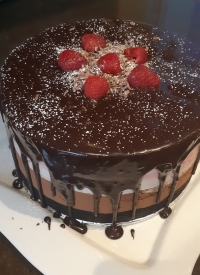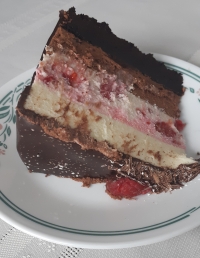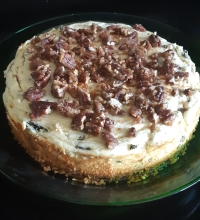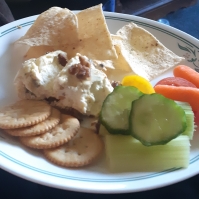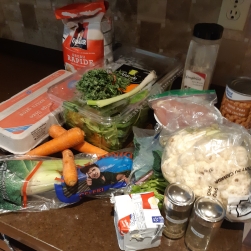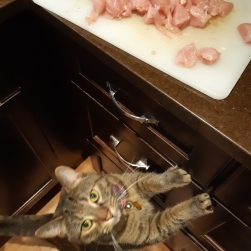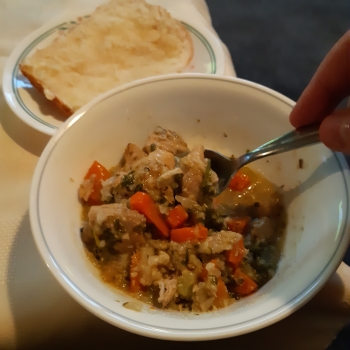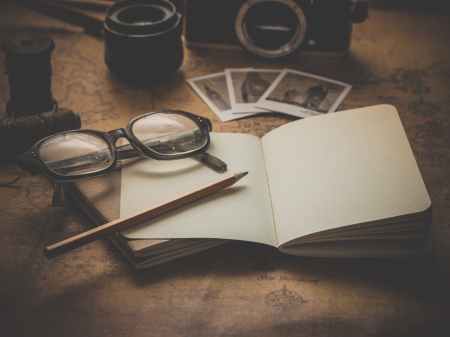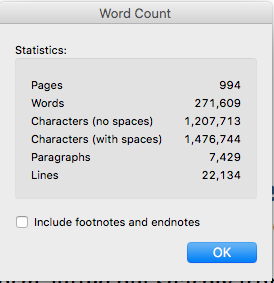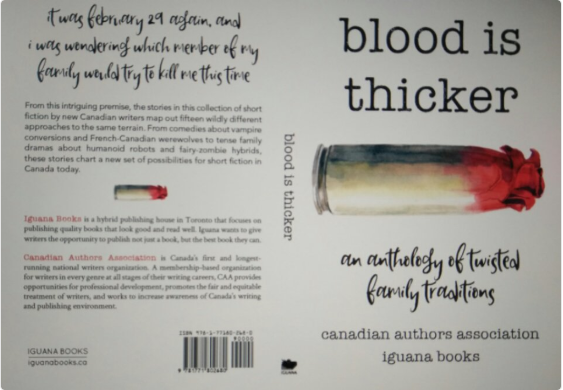Recently I was struggling with a section of my WIP (Work in progress), that was necessary for the plot, but just seemed to drag on. It was a scene set between action filled chapters where my main character (MC) was by himself and taking emotional inventory. A lot had just happened, and he was suddenly alone and reeling with a barrage of emotions. This was a necessary part of the book, but how could I write a scene when my character had a lot of feelings and thoughts to work out, but no one to talk to?
I was once given some very good advice from a friend.
If you’re bored writing it, your audience will be bored reading it.
This is very true. I was bored writing this section. Bored rereading and editing it. But it was necessary to move the story along- in fact it was crucial to character development. But what could I do to make it more interesting? I was actually able to come up with a list of ideas, and thought I would share them for anyone else similarly stuck!
Sometimes the simpler solutions can work best for your piece. If your emotional section is too long, maybe there’s some action you can add in. Is the character running away/towards someone or something? Is their life in danger? Is there any way to up the stakes of the situation and add more urgency?
It’s usually a good idea to have some downtime between big events. Your character should have a moment to catch their breath and take stock of what’s happened, because generally when you’re running for your life you aren’t doing your best self reflection. Just make sure this downtime isn’t too long, and it leads to something a bit more fast paced.
You can intersperse setting descriptions with thoughts/emotions to make your writing more dynamic. One of the ways to do this is to have your character go somewhere or find some object with a lot of personal significance.
Be careful with this one, it can be a bit over done. How many romance plots are furthered with the MC going to think about everything that’s happened at the place they met their true love? Or someone who’s lost a loved picking up their favourite item and reflecting back on some memory tied to it? It can be a beautiful moment if done properly though, so don’t discount it entirely.
It’s also better to make your descriptions active if possible. Having six pages describing minute details of every knick knack, table and chair in a room can be a bit much, so maybe have a couple of sentences to give a general sense of the setting, and then have your character move within that space.
For example, imagine a huge, stone room that’s cold and drafty. The character walks through the doorway, their echoing footfalls leaving dusty prints while they think about some major events that’s just occurred. They have to step around the massive, worn wooden table that could comfortably seat fifty people and stretches nearly the length of the room. The character idly runs their hand along the iron candleholders welded to the wall, shivering as a draft rattles down the chimney and tears through the room, stirring up the smell of must and decay that makes them sneeze.
We’re seeing more details of the setting being revealed as the character moves and interacts with the room. Have the character experience the space while reflecting on something- engage all the senses and your readers will go along for the ride!
Another way to use setting is as a contrast.
It can be tempting to have someone reeling with angst and regret in the pouring rain, but imagine how powerful that same scene could be if it were set on a sunny with a playground full of happy children running and playing just behind them? Or a burnt down husk of a house being the place the MC is happy about something that’s just occurred? The contrast of setting and emotion can draw the reader in, and create more memorable moments.
Of course the location should still make sense to the plot. Don’t make things needlessly more confusing and complicated just to have an interesting setting. For instance, the scene I was working on in my book had to be set in the forest due to the timeline and plot of the book.
Yet you can still add setting contrast in other ways. Maybe it’s your character’s go-to to drink at a dive bar when they’re upset. The bar is a common place to go when someone’s struggling, but that’s your character’s safe place to think and where the next part of the plot occurs. So maybe your MC is wallowing at this dingy bar as per usual, but on that day there’s a big game on and the bar’s unusually busy while everyone cheers and crowds around the TV. This excited and frenzied energy could be a great backdrop to your character’s breakdown.
The obvious answer to a character needing to talk things out but being physically alone is to have them talk to themselves. This could work, depending on the situation and character, or it could seem like lazy writing that pulls your reader out of the story.
If your character has lost someone, or is having a crisis of faith with whatever god they worship, then having them shout at the sky may be perfectly natural.
If they’re the type who often talks to themselves, this may seem normal for your character. Or if they’ve been alone for a long time/delusional with some substance or fatigue/hunger this could also be understandable. Just make sure if you use this one sparingly if it fits the situation in your book.
Then there’s the next obvious choice; the dream/hallucination. Your character is physically alone, but in their mind someone else is there with them. I would say, again, if this fits with your plot it can be very effective, but if you just use it as a way to shoehorn in some dialogue and it comes out of the blue, it can seem very contrived and forced.
If your character took some substance/is near some object that induces visions, this could be an incredible look into your character’s psyche. The whole dreaming a conversation with someone who’s dead can seem cliche, so if you do use it, explain it in the plot or use it intermittently. If your character is magic and can connect with others’ in their dreams, this could be a very effective tool. If your character just dreams every time they need to work something out, its may come across as very contrived.
- Use Actions to Show Character’s State of Mind
Rather than just outright saying what your character is feeling, show your readers with some well placed telling-actions. The old show not tell writer’s adage is perhaps overused, but the right action can tell us so much more than just saying what someone’s feeling.
This can come down to body language. Some of the classics might be for a character to walk with their arms crossed if they’re feeling very overwhelmed or scared. Maybe the character has a tic when they’re nervous or unsure. Little things like playing with their hair/biting their nails, down to something a little more obvious like a stutter or twitch etc.
Word choice is also key here. Someone running down the street tells us nothing except the character’s moving quickly. But if they’re excited to share some good news and they’re pelting down the street, we can feel that excitement in how fast they’re moving.
- Don’t Go For the Obvious Emotions Only
My biggest breakthrough moment was coming to this realization. My main character had just been chased from his home and family, and his mind was whirling because he was feeling lost, scared and mad simultaneously. Now, that probably sounds like perfectly reasonable range of emotions given the situation, but how often when something earth shattering happens do we ever just feel the obvious things? Yes, those are the overwhelming emotions at the forefront in that scenario, but that section of my book was boring because I was barely scratching the surface. Think of all the undercurrents of other emotions could be scattered in to make the readers feel that mind reeling sentiment of suddenly having no home and family.
My character was finally out on his own, so he might be a bit happy/excited. Maybe he feels guilty for feeling anything positive when his family’s in danger. Maybe there’s some hopelessness or hopefulness at how the situation’s progressing, maybe he’s envious of everyone else who doesn’t have to deal with all the insanity of his village. Maybe there’s some bitterness that he now feels obligated to help people that rallied against him his whole life.
You don’t want to put too much in, it will overwhelm the scene, but little hints of varying and clashing feelings can add some emotional depth, plus you may discover some new underlying themes/character traits that you can carry through the rest of the book.
I listed some general emotions below (remember all of these emotions can be aimed towards the situation, towards others or towards the self) :
- Fear
- Anger
- Sadness
- Joy/happiness
- Hatred
- Repulsion
- Surprise
- Faith
- Anticipation
- Pity
- Indignation
- Helplessness
- Hopelessness
- Dejection
- Anxiety
- Determination/stubbornness
- Humble/unassuming
- Love
- Shame/guilt
- Envy/jealousy
Here’s a more comprehensive list for your brainstorming pleasure.
Finally, less is often more. Another trite saying that has staying power due to its undeniable truth.
We as writers can sometimes underestimate our readers’ understanding. Having a whole chapter just on how sad a character is will likely come across as overly melodramatic.
A few inner thoughts, mixed with the proper movement and setting will usually be enough to convey your character’s state of mind. Not that they should just move on from some wonderful or crushing event, but having nothing but wallowing/basking in the moment for page after page may have your audience skimming your work instead of actually reading.
Also remember, your character has probably not achieved perfect self-reflection. This means they won’t understand every aspect of their feelings. How often do we have these whirlwinds of emotion and not always entirely understand why we feel a certain way? Sometimes we feel an undercurrent of opposing emotions, maybe feel a bit petty, jealous, happy etc. even though it may not be conducive to our situation. Try not to have some thought or emotion come from too far left-field, but also try not to beat your readers over the head with explanations either. Give them some breadcrumbs and let them find their way.
***
These were the ideas that broke me out of my emotional reflection rut for my book- I hope some of them may be useful for your own work. Happy writing!

